1. Crows – The Feathered Einsteins

Imagine a bird that can solve puzzles, recognize faces, and even hold grudges. Meet the crow—nature’s tiny, flying mastermind. These brainy birds have been caught crafting tools out of sticks and wires to fish out food, a skill once thought to be exclusive to primates. That’s right—if you ever upset a crow, don’t be surprised if it warns its friends about you. Scientists have even observed them planning out multi-step solutions to problems, something that most toddlers struggle with. Some crows have been spotted using traffic lights to crack nuts—because why waste energy when humans will do the hard work for you?
Crows are also incredibly resourceful, using their surroundings to their advantage in ways that seem almost human. Some have been observed dropping hard-shelled nuts onto roads and waiting for cars to crush them before swooping in for a meal. In Japan, they’ve even mastered the art of placing nuts at pedestrian crossings so that they can retrieve them safely when the light turns red. It’s no wonder some researchers argue that crows are just as intelligent as great apes.
2. Octopuses – The Great Escape Artists
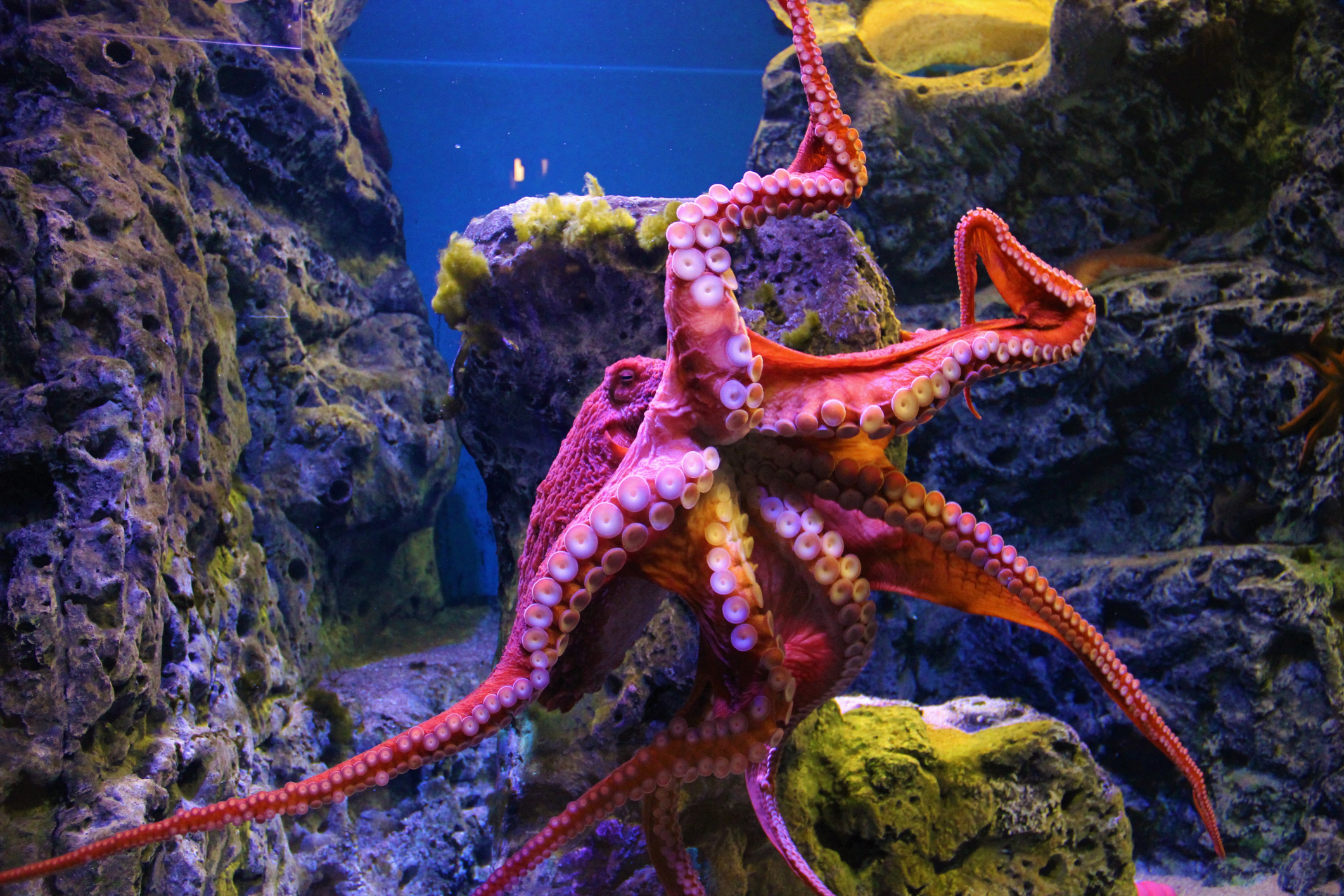
If there were a Houdini of the animal kingdom, it would be the octopus. These eight-armed geniuses can slip through the tiniest cracks, unscrew jar lids from the inside, and even manipulate their environment to create their own homes. In captivity, they’re known to escape tanks, sneak into other enclosures for snacks, and then return as if nothing happened. One particularly rebellious octopus in an aquarium was caught repeatedly squirting water at a lightbulb to short-circuit it—just because it didn’t like the brightness. Some researchers believe octopuses are so smart because of their highly developed nervous system, which is spread throughout their arms rather than centralized in a single brain.
Despite their intelligence, octopuses live incredibly short lives, with most species surviving only a few years. This makes their cognitive abilities even more fascinating—imagine having the brainpower to break out of a lab but only living long enough to do it a few times. They’ve also been observed engaging in play, a behavior often associated with higher intelligence in animals. Their ability to manipulate objects, learn from experience, and adapt to new environments has led scientists to compare them to aliens.
3. African Grey Parrots – The Chatty Geniuses

Think parrots are just good at mimicking words? Think again. The African grey parrot doesn’t just repeat sounds—it understands concepts. These birds have been known to ask for specific food items, understand numbers, and even express frustration when they don’t get what they want. One famous African grey, Alex, could identify shapes, count objects, and even invent his own words for things he didn’t recognize. These parrots can also engage in meaningful conversations, sometimes answering questions with unexpected yet contextually appropriate responses.
African grey parrots also form strong emotional bonds with their owners, often displaying behaviors that suggest deep understanding and attachment. Some have even been observed comforting distressed humans, using their words and actions to provide support. Researchers believe their high level of intelligence is linked to their complex social structures in the wild, where they must remember individuals, maintain relationships, and navigate intricate social hierarchies.
4. Pigeons – The City’s Secret Geniuses

Often dismissed as mere “sky rats,” pigeons deserve way more respect than they get. These urban survivors are capable of recognizing themselves in mirrors (a trait shared by only the most intelligent animals), remembering hundreds of different images for years, and even identifying different artistic styles. Yes, you read that right—pigeons can distinguish between paintings by Monet and Picasso. They’ve also been used in wartime as messengers, navigating home over vast distances with a level of accuracy that would put Google Maps to shame. Pigeons’ homing abilities are so advanced that some scientists believe they use the Earth’s magnetic field to find their way.
Their intelligence doesn’t stop at navigation and art appreciation. In experiments, pigeons have been trained to recognize letters of the alphabet, make numerical comparisons, and even detect cancer in medical scans with surprising accuracy. Their ability to process and categorize complex information shows that their brains are wired for more than just scavenging crumbs. Despite their reputation, pigeons have a level of intelligence that rivals some of the smartest animals on this list.
5. Bees – The Mathematicians of the Insect World
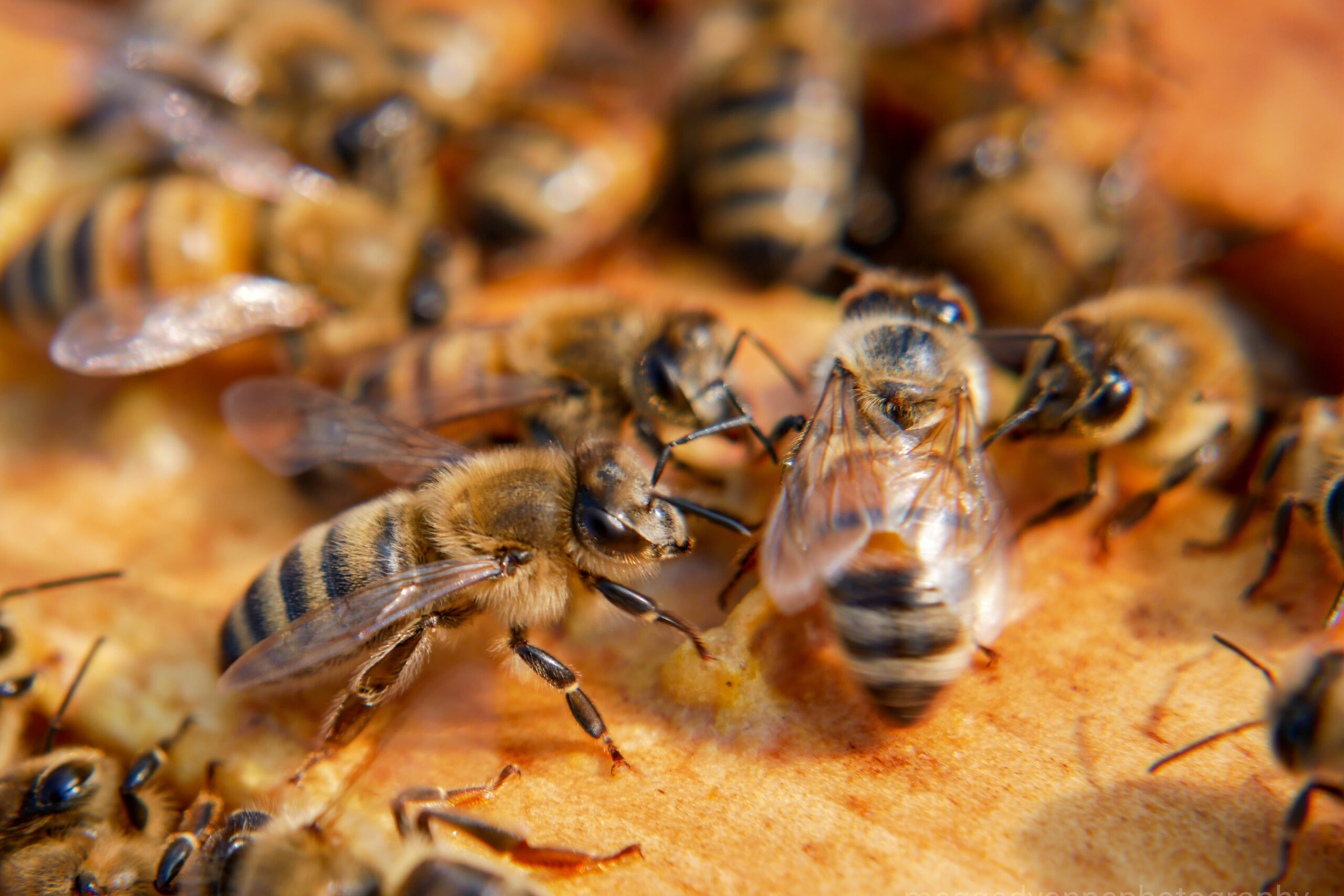
What’s small, fuzzy, and better at math than you? A bee. These tiny pollinators don’t just make honey—they can also count, understand the concept of zero, and even make strategic decisions. In experiments, bees have shown the ability to choose the shortest route between flowers, essentially solving complex mathematical problems in seconds. Scientists have also discovered that bees can communicate detailed directions to their hive-mates through a “waggle dance” that maps out the exact distance and direction to the best nectar sources. Some bees have been trained to perform simple arithmetic, proving that their tiny brains pack a big punch.
But their intelligence isn’t just about numbers—it’s also about teamwork. Bees work together in highly structured colonies, with different roles assigned to different individuals to ensure survival. They even recognize when their hive is in danger and will quickly coordinate defense strategies, often sacrificing themselves for the greater good. Despite having brains smaller than a sesame seed, their collective intelligence rivals that of much larger animals.
6. Cephalopods – The Masters of Disguise and Strategy
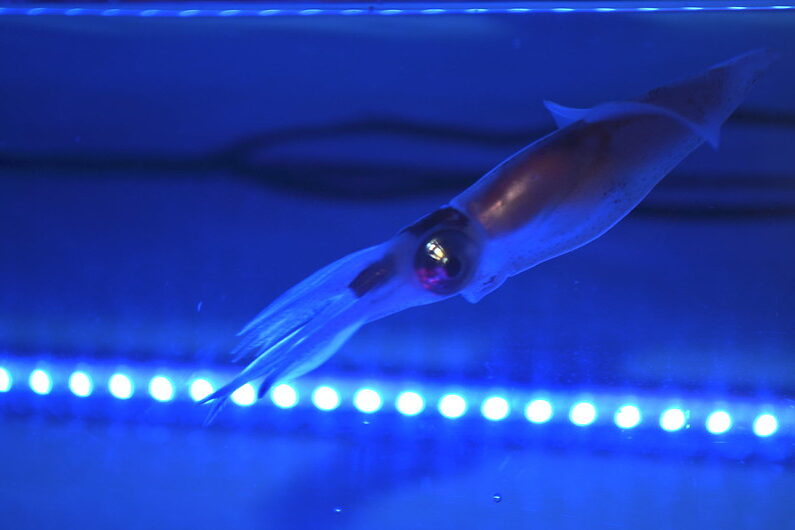
Octopuses aren’t the only smart cephalopods. Squids and cuttlefish also possess extraordinary intelligence, particularly when it comes to camouflage. These underwater illusionists can change their skin color, texture, and even mimic other sea creatures to avoid predators or sneak up on prey. But it’s not just their disguises that make them smart—some cephalopods have been observed communicating with each other through color changes and planning hunting strategies. Their problem-solving skills are so advanced that some researchers compare them to primates in terms of intelligence.
It’s not just about survival, though—some cephalopods even display signs of curiosity and playfulness. In captivity, they have been known to interact with objects in ways that suggest problem-solving for fun rather than necessity. Some have even been observed recognizing individual humans and showing preferences for certain people over others. Their ability to adapt and manipulate their environment makes them one of the ocean’s most enigmatic intellectuals.
7. Kea Parrots – The Playful Problem-Solvers
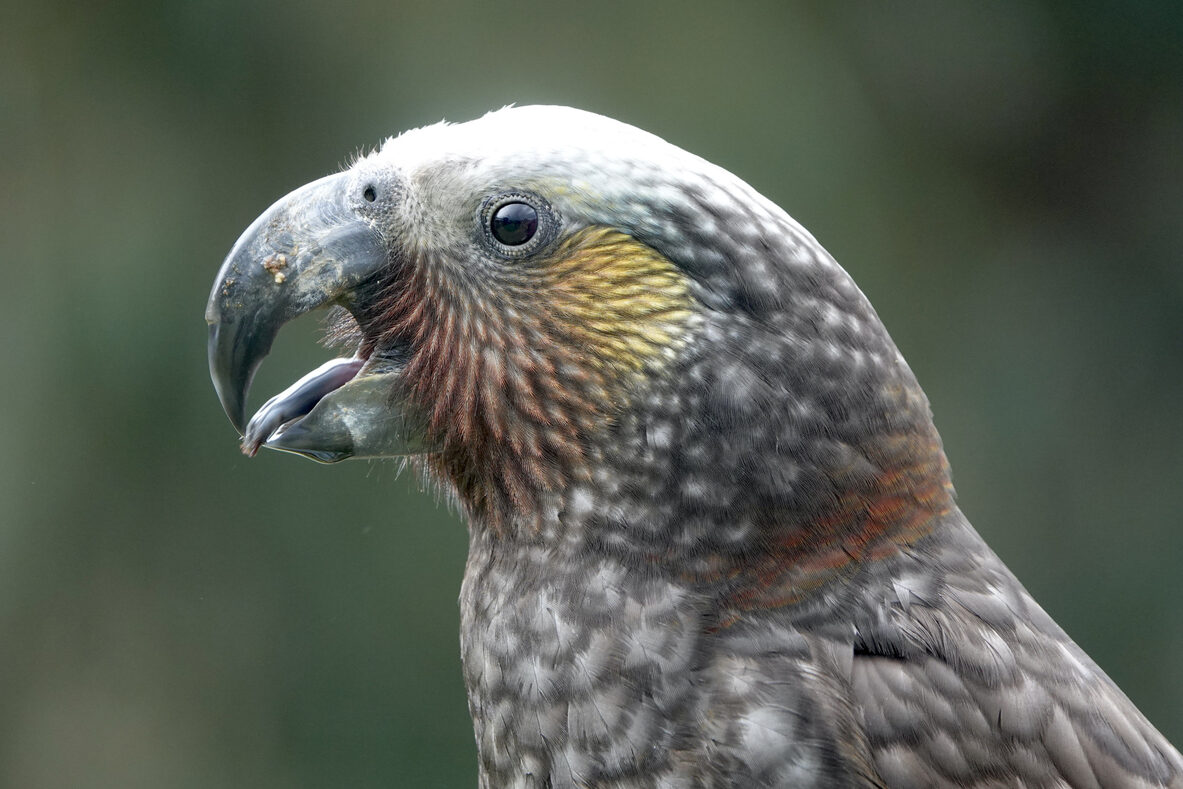
If birds had a mischievous genius award, the Kea parrot would win it. Found in New Zealand, these highly intelligent birds are known for their playful nature, curiosity, and problem-solving skills. Keas have been observed working together to solve puzzles, using tools to access food, and even engaging in playful activities just for fun. They’re also notorious for their love of destruction—car windscreen wipers, backpacks, and even parked bicycles have all fallen victim to their relentless curiosity.
Scientists believe this playfulness is a sign of high intelligence, proving that sometimes, the smartest creatures are the ones having the most fun. In one study, Keas were shown to understand probabilities, choosing the most statistically likely food reward in an experiment. Their cooperative problem-solving skills rival those of primates, making them one of the most cognitively advanced birds on the planet. With their mix of intelligence and mischief, it’s no wonder they’re called the “clowns of the mountains.”
8. Ravens – The Strategic Thinkers

Crows might be the problem-solvers, but ravens are the strategists. These birds have been observed working together to achieve goals, deceiving other animals (and sometimes each other), and even playing tricks just for amusement. In one experiment, ravens were able to remember past experiences and use that knowledge to outsmart their competitors in food-gathering tasks. They’ve also been seen pretending to hide food in one spot while secretly stashing it somewhere else—a classic trickster move.
Ravens have even been shown to plan for the future, a behavior once thought to be uniquely human. Some have been observed holding onto tools they might need later, an advanced form of problem-solving that demonstrates foresight. Their intelligence is so impressive that in Norse mythology, Odin kept two ravens, Huginn and Muninn, as his eyes and ears across the world. Maybe the Vikings knew something about these birds that science is only now confirming.
9. Manta Rays – The Smartest Fish in the Sea

You might think fish aren’t exactly the brightest, but the manta ray is here to prove you wrong. These giant, graceful creatures have the largest brain-to-body ratio of any fish and have been observed recognizing themselves in mirrors—a sign of self-awareness that’s extremely rare in animals. They also display curiosity, social intelligence, and the ability to problem-solve in ways that defy expectations.
Scientists believe manta rays use their intelligence to navigate complex social structures in the ocean. They’ve been observed forming close bonds with other rays and even showing signs of emotional awareness. Their curiosity about humans is also remarkable, with many divers reporting interactions where manta rays seem to engage with them intentionally. Who knew one of the ocean’s most graceful creatures also had one of its sharpest minds?
10. Ants – The Ultimate Team Players
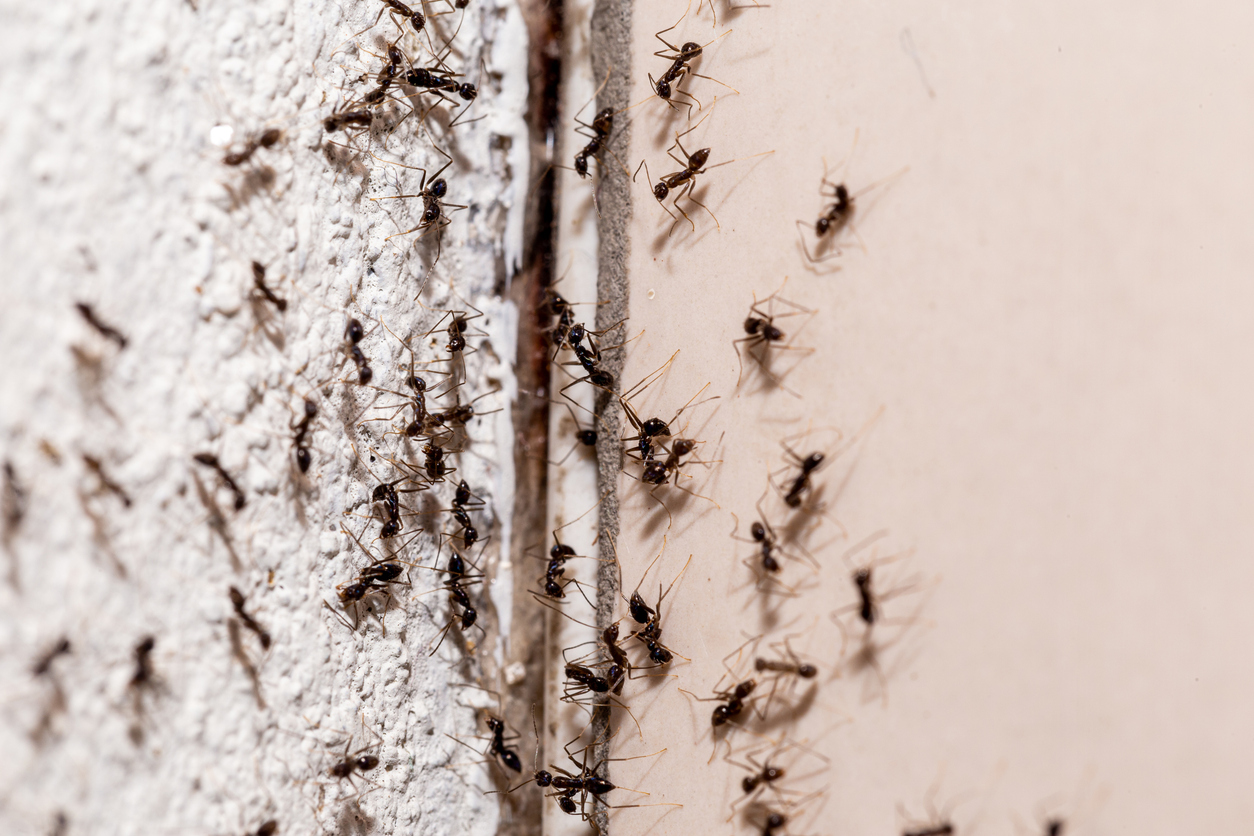
Individually, an ant might not seem like a genius, but together? They function as one of the most sophisticated intelligence networks in nature. Ant colonies can build massive underground cities, create bridges with their own bodies, and coordinate attacks on prey using strategic formations. They communicate through chemical signals, essentially operating like a hive mind. Their ability to adapt and reorganize in response to threats or environmental changes showcases a level of intelligence that goes beyond simple instinct.
Some species even engage in farming, cultivating fungus for food, while others have been observed using tools to collect and transport resources. Their ability to work collectively and solve complex logistical problems is a testament to the power of cooperation. Despite their tiny size, ants operate with a level of organization and efficiency that rivals human civilizations. Maybe world leaders could take a few notes from these little masterminds.


